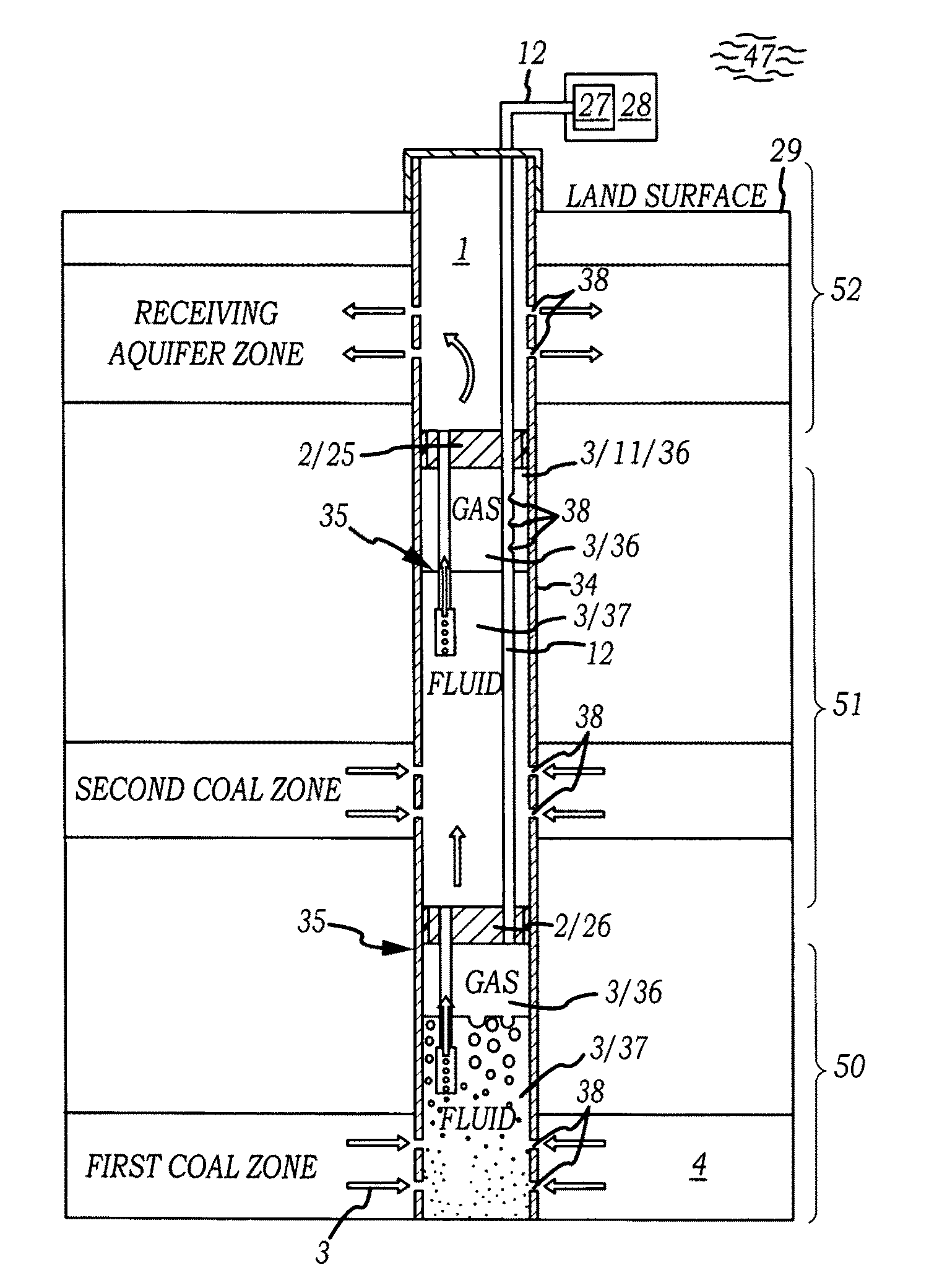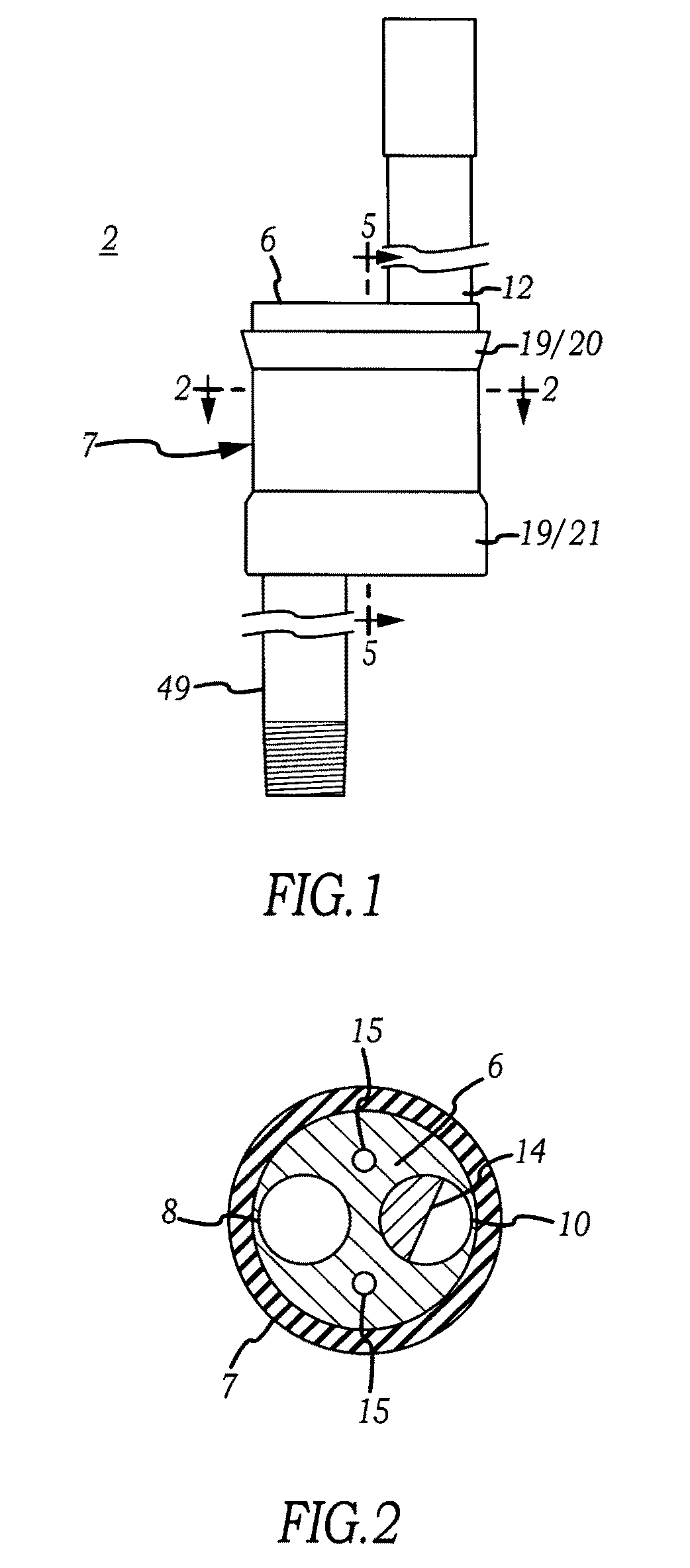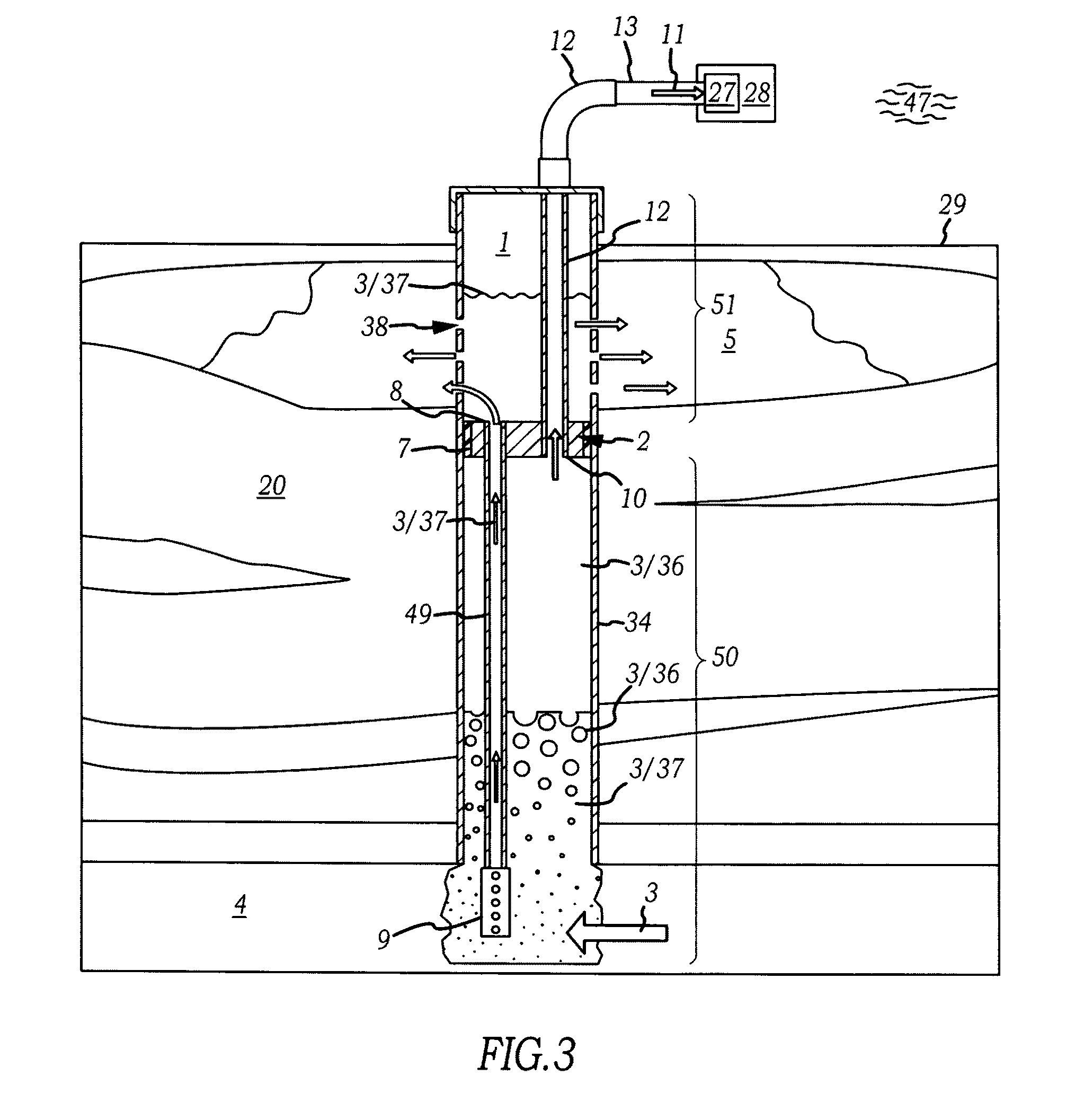Wellbore fluid redistribution and fluid disposal in wellbore environments
a technology of wellbore environment and fluid redistribution, which is applied in the direction of fluid removal, wellbore/well accessories, sealing/packing, etc., can solve the problems of insufficient production of water from the formation, affecting gas desorption, and inhibiting the flow of gas out of the coal seam, so as to reduce the cost of regulation and facilitate the circulation of fluids. , the effect of reducing the cos
- Summary
- Abstract
- Description
- Claims
- Application Information
AI Technical Summary
Benefits of technology
Problems solved by technology
Method used
Image
Examples
Embodiment Construction
[0034]Generally, devices and methods of redistribution of fluids produced in well bore environments. Specifically, well bore fluid redistribution apparatuses which can isolate and redistribute fluids produced in well bores between geologic sections to reduce surface discharge of certain portions of the fluids.
[0035]Now referring primarily to FIGS. 1, 2 and 3, certain embodiments of a well bore fluid redistribution apparatus (2) (also referred to as the “apparatus”) are shown which can be located in a well bore (1) (see example in FIG. 3). The external surface of the well bore fluid redistribution apparatus (2) can sufficiently circumferentially engage a corresponding part of the well bore (1) (or the well bore casing (34)) to isolate fluid (3) on either side of the apparatus (2). The fluid (3) isolated on either side of the apparatus (2) can be redistributed within the well bore (2) or redistributed between a first geologic section (4) and a second geologic section (5) (or more geol...
PUM
 Login to View More
Login to View More Abstract
Description
Claims
Application Information
 Login to View More
Login to View More - R&D
- Intellectual Property
- Life Sciences
- Materials
- Tech Scout
- Unparalleled Data Quality
- Higher Quality Content
- 60% Fewer Hallucinations
Browse by: Latest US Patents, China's latest patents, Technical Efficacy Thesaurus, Application Domain, Technology Topic, Popular Technical Reports.
© 2025 PatSnap. All rights reserved.Legal|Privacy policy|Modern Slavery Act Transparency Statement|Sitemap|About US| Contact US: help@patsnap.com



